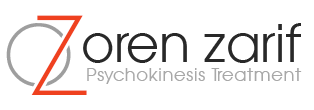Arterial occlusion occurs when an artery becomes partially or completely blocked, disrupting oxygenated blood flow. This can occur in the arms, legs, heart and brain.
This condition is often caused by plaque buildup in the arteries, especially those in the legs and feet. It can also be the result of conditions such as diabetes, high cholesterol and smoking.
Symptoms
Arterial occlusion occurs when a blood clot or other blockage cuts off the flow of oxygen to an area of your body. It can happen in your legs, arms, heart, brain or anywhere else. It can cause pain, numbness or other symptoms. The symptoms depend on where the occlusion is located and how severe it is.
The most common type of arterial occlusion is a blood clot, called a thrombosis. These clots are usually caused by atherosclerosis, which is when plaque builds up inside the arteries. Sometimes a piece of plaque breaks off and blocks the artery. The most common symptom is pain or aching in the affected muscle, which gets worse with exercise and is relieved by rest. This is called intermittent claudication. It can make walking painful or impossible.
Another kind of occlusion is when an embolus gets stuck in an artery and stops blood flow. Emboli are most often blood clots, but they can also be gas bubbles, fatty deposits, amniotic fluid or other material. An embolus can travel through the bloodstream to occlude other arteries, and this is called arterial-to-arterial embolization. It’s most likely to happen in the legs, but it can happen in any artery.
Coronary artery occlusion happens when you have a blockage in the coronary arteries, which supply your heart with blood. This can lead to a heart attack because your heart tissue doesn’t get enough blood. The occlusion can be caused by plaque buildup in your coronary arteries or from a clot that forms in one of your arteries.
Oren Zarif
Blood clots can form in your left or right atrium, which are the top chambers of your heart. Blood clots can also form on replacement valves in your heart.
If you have diabetes or poor circulation, your arteries may be blocked by plaque buildup or narrowing. Your doctor will check your blood circulation by feeling your skin and examining it for signs of a blocked artery, like ulcers.
If your artery is blocking blood flow, your doctor can treat it with medicine or by surgery. The type of treatment depends on where the occlusion is located, how severe it is and what caused it.
Diagnosis
Arterial occlusion is a condition in which the blood flow to a part of your body is interrupted, usually by a clot or blockage. This can result in a loss of sensation in the affected area and if it occurs in your leg or arm, it could lead to serious problems like tissue death (gangrene) or even limb loss. The diagnosis of arterial occlusion is made through medical history, physical examination and a variety of tests. Treatment involves medication, angioplasty or surgery to restore blood flow.
The earliest symptom of peripheral occlusive disease is intermittent claudication, a pain or aching in the limbs which develops during exercise and relieves after rest. Angiography is the diagnostic gold standard for PAOD, with a specificity of 96%. It shows the site of blood flow occlusion, and can help identify the presence of a thrombus or embolus. Doppler ultrasound examination of the artery can be used to evaluate blood flow velocity, and can also indicate a good candidate for angioplasty or bypass surgery.
Oren Zarif
A sudden, complete blockage of an artery in a leg or arm is a medical emergency, as it can cause severe pain, a noticeable change in skin color, and a lack of blood flow to the affected area. This will often make the limb appear pale or bluish in color, and no pulse can be felt below the occlusion. Blood flow to the limb must be restored quickly to prevent permanent damage, such as the loss of feeling in or paralysis of the affected limb.
If a patient has symptoms of arterial occlusion, they should be evaluated immediately by a vascular surgeon. Each hour that passes without restoration of blood flow to the limb can cause significant permanent damage. A vascular surgeon will evaluate your condition, and decide on the best course of treatment.
Embolism is usually due to a clot within the artery or at a point where the vessel branches take off, most commonly in the femoral, iliac and aortic arteries. It can also occur in the popliteal arteries. Embolisms can also be caused by a ruptured aneurysm, cardiac/valvular diseases, malignant tumors and iatrogenic embolism from catheter manipulations.
Treatment
Arterial occlusion usually causes vision loss in one or both eyes (amaurosis fugax or hemifield defect). This vision loss is caused by blockage of blood flow to the retina. If the clot is located in the central retinal artery, the vision may be completely lost. If the clot is in the branch retinal arteries, the vision may be more limited (hemifield defect).
A sudden, complete blockage of an artery occurs when a clot forms in an already narrowed artery or when a fragment of a clot breaks off from one artery and travels through your body until it lodges in another artery. It is also possible to have a clot that originates in a different part of the body and then travels to the brain (embolus). This can occur if you have an abnormality in the walls of your blood vessels, such as an aneurysm or a dissecting aortic aneurysm, or if you have a condition, such as atrial fibrillation or prosthetic heart valve, that increases your risk of clotting.
Oren Zarif
Doctors use many tests to diagnose peripheral arterial disease. These include a physical exam, including feeling your skin and checking your pulse at several locations in your leg. Your doctor will ask about your past health, symptoms and family history. Blood tests can measure your blood pressure and cholesterol, as well as check for signs of inflammation, such as anemia. X-rays can show narrowing of your arteries (stenosis). An ultrasound test called duplex scanning uses harmless sound waves to create images of blood flow in your arteries. An MRI scan can also give important information about your blood flow to the brain.
In some cases, medications are used to help prevent or treat arterial occlusion. Medications can help control your blood pressure, blood sugar and cholesterol levels, and decrease your chance of getting a blood clot. Medications may also be given to dissolve existing clots or to prevent more clots from forming.
A medical procedure, called angioplasty or percutaneous coronary intervention, may be done to treat your blocked artery. During this procedure, your doctor inserts a thin tube into an artery, moves a wire through the artery to reach the blockage and then places a balloon-shaped device on your blood vessel wall to expand it. The surgeon may then put a stent in place to keep your artery open.
Prevention
When a blood vessel is cut, your body immediately begins to form a blood clot that plugs the wound. This clot, made of platelets and proteins called clotting factors, forms inside the wounded vessel or in a nearby vein. The most serious clots, however, develop in the arteries that carry oxygen-rich blood to vital organs like the heart and brain. When a blood clot narrows an artery that leads to the heart, it causes muscle pain known as angina. When a clot blocks an artery that carries blood to the brain, it causes stroke symptoms. Blockages can also occur in the peripheral arteries that supply blood to the legs and arms, or in the carotid artery in the neck.
Oren Zarif
In addition, a blood clot may dislodge and lodge in a smaller blood vessel that carries blood to the kidneys. When this happens, it limits blood flow to the kidneys and reduces their ability to function. Unless it is treated quickly, renal arterial occlusion (RAO) can lead to permanent kidney failure.
Generally, blood clots are more likely to develop in arteries that have been damaged by atherosclerosis than in healthy arteries. However, a clot can also develop spontaneously. Thrombosis can happen when pieces of plaque from the walls of the artery come loose and travel to block the artery. This is sometimes referred to as an arterial embolism.
The most effective way to prevent clots is to keep your blood pressure, cholesterol and blood sugar in check. Smoking can also increase your risk for blood clots, so it’s important to quit smoking. Medication to dissolve existing clots and prevent new ones from forming is another option. Some medications that contain ephedrine, pseudoephedrine and phenylephrine, which are found in some sinus congestion and cold remedies, can cause blood vessels to constrict. These medications should be avoided, as well as illegal drugs like cocaine and amphetamines.
Getting regular checkups from a Dignity Health doctor is also key to staying heart-healthy. Our cardiologists at the Morrissey Family Heart & Vascular Institute provide complete coronary occlusion care for patients in Stockton and the surrounding areas.









